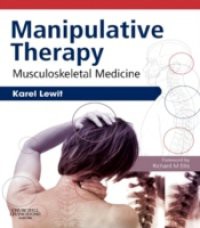Manipulative Therapy provides a systematic overview of chain reactions which are the basis of a rational holistic approach. These reactions are closely related to the upright human posture and to the "deep stabilisation system" as shown in the work of Richardson et al in Therapeutic Exercise for Spinal Stabilisation in Low Back Pain. This approach has meant a considerable advance in the therapy and rehabilitation of patients. It gives a balanced picture of the importance of musles, joints and soft tissues, under the control of the nervous system, the textbook aims to treat disturbance of function, the most common cause of pain in the motor system, in the most effective way. Locomotor system dysfunctions are shown to be treated very effectively using manual medicine techniques. Spinal column and joint mobility can be restored, and pain triggered by the autonomic nervous system can be positively influenced. This is a comprehensive source of information relating to pathogenesis, diagnosis, indications and treatment methods, incorporating the latest research findings. Radiological diagnosis is is shown as laying the foundation for successful diagnosis and treatment with manual medicine techniques. Typical conditions associated with pain in the locomotor system is presented and described in functional terms for the first time. The book concludes with chapters covering preventative aspects and expert assessment. Manipulative Therapy: Musculoskeletal Medicine is the follow on from: Manipulative Therapy in Rehabilitation of the Locomotor System, published by Butterworth Heinemann, 1985.

